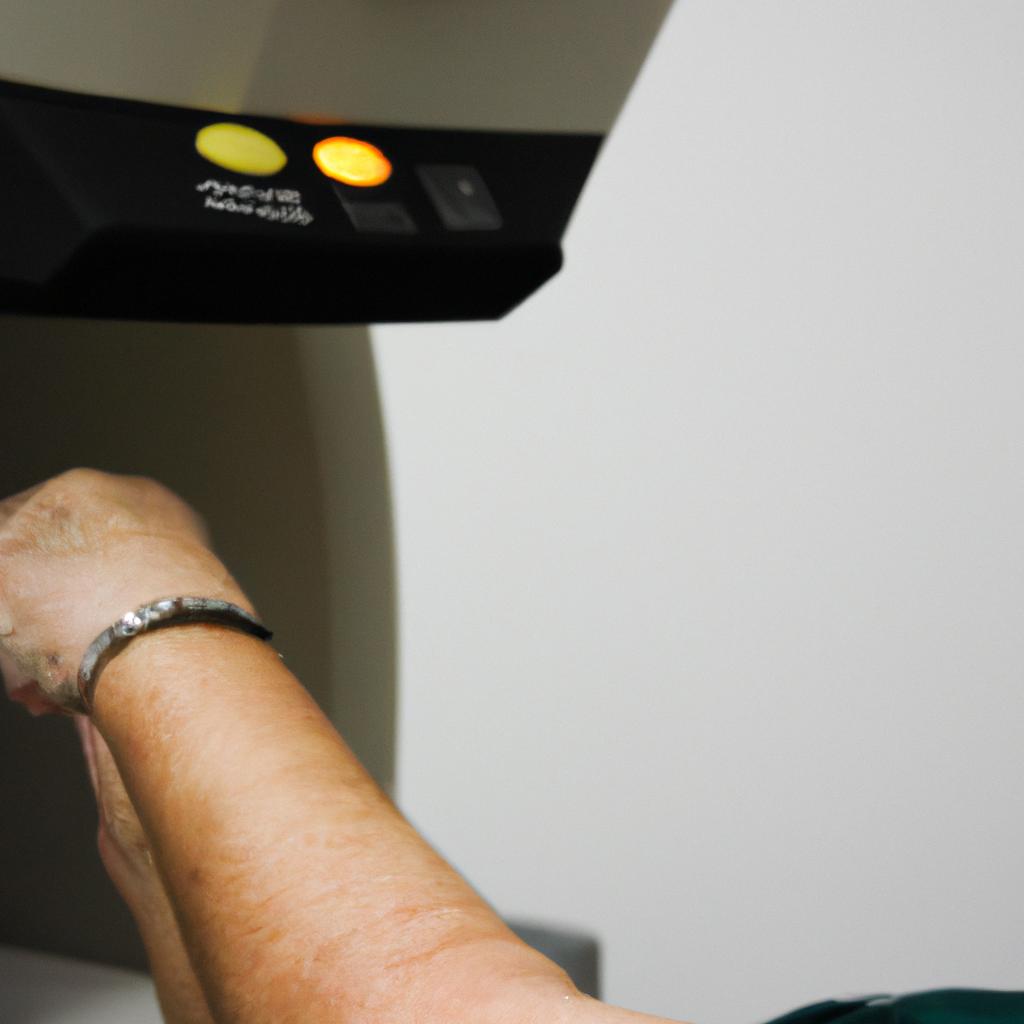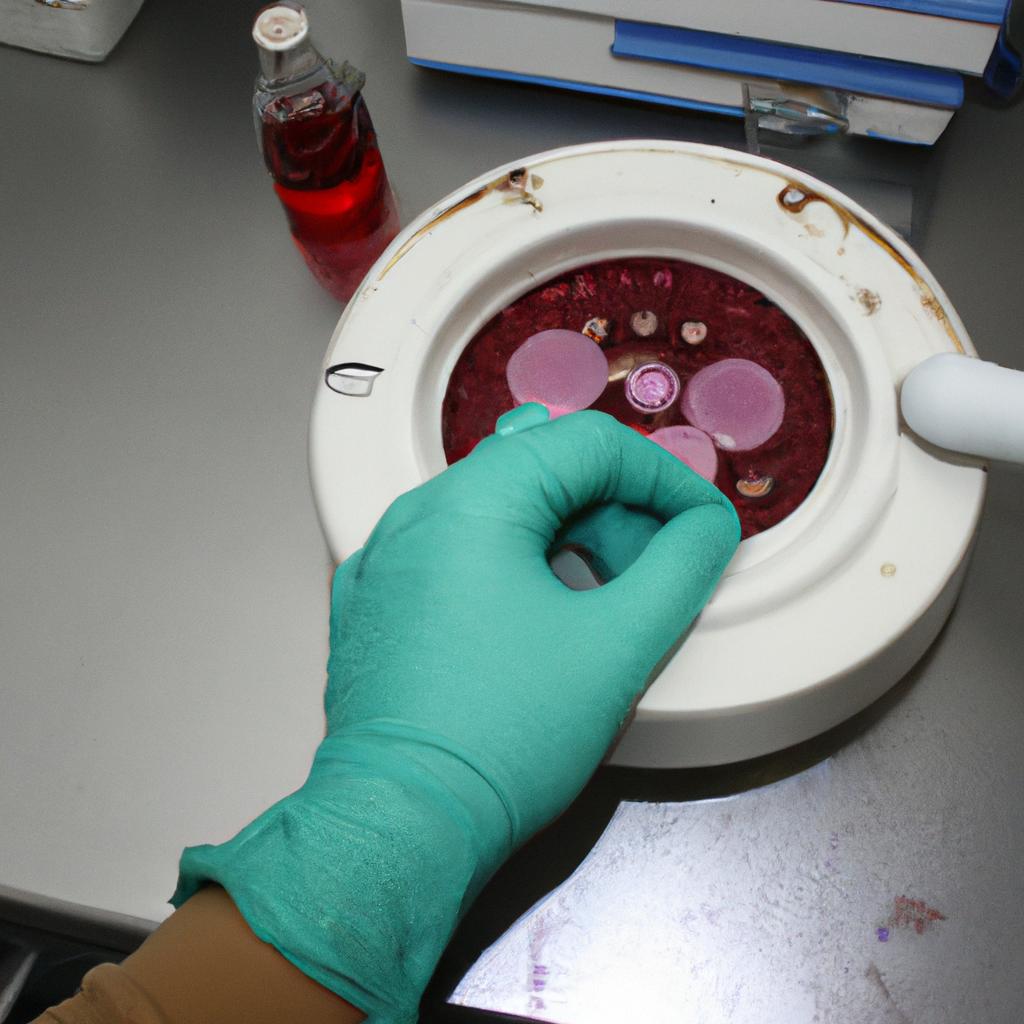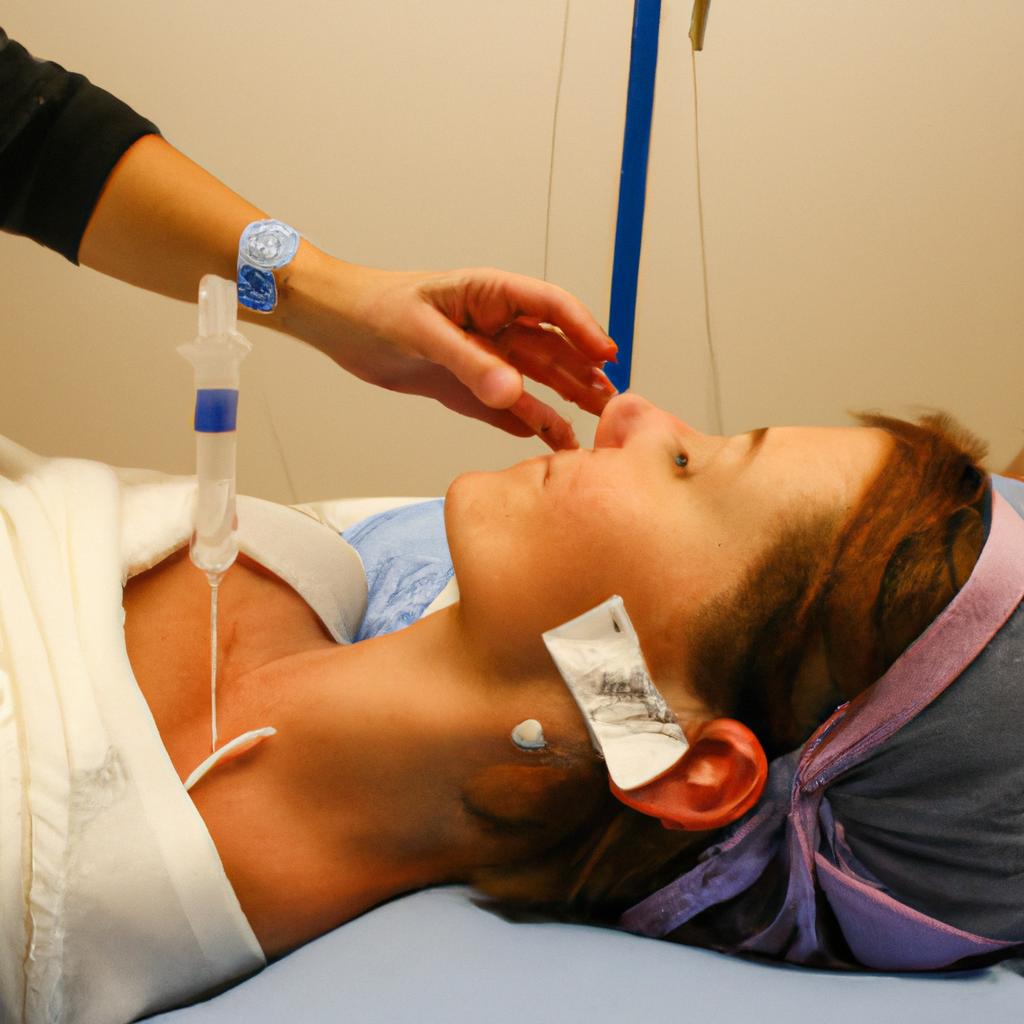Cancer, a complex and devastating health condition, affects millions of people worldwide. It is characterized by the uncontrolled growth of abnormal cells in various parts of the body. The impact of cancer goes beyond physical suffering; it takes an immense toll on individuals’ emotional well-being as well as their social and psychological aspects. For instance, consider the case of Jane, a 45-year-old woman diagnosed with breast cancer. Not only did she have to face multiple rounds of chemotherapy and radiation therapy, but she also experienced a profound sense of fear, anxiety, and isolation throughout her treatment journey.
Support and survivorship play crucial roles in effectively managing health conditions like cancer. Support refers to the assistance provided to patients during their diagnosis, treatment, and recovery phases. This can come from healthcare professionals, family members, friends, or support groups specifically designed for individuals affected by cancer. Survivorship encompasses the concept of life after cancer diagnosis and focuses on helping survivors maintain optimal physical and mental health while addressing any long-term effects or challenges they may encounter post-treatment.
The purpose of this article is to explore the importance of support systems and survivorship programs in enhancing the overall well-being of individuals facing cancer. By examining various strategies implemented within these frameworks, such as counseling services , complementary therapies, and educational resources, we can better understand how they contribute to the emotional and psychological healing of cancer patients.
Counseling services are a vital component of support systems for individuals facing cancer. They provide a safe space for patients to express their fears, anxieties, and concerns while receiving guidance and emotional support from trained professionals. Counseling sessions can help patients develop coping mechanisms to manage the emotional turmoil that often accompanies a cancer diagnosis. Additionally, counseling can assist in improving communication skills between patients and their loved ones, fostering healthier relationships during this challenging time.
Complementary therapies, such as massage therapy, acupuncture, or art therapy, can also play a significant role in supporting individuals with cancer. These alternative treatments aim to alleviate physical discomfort and promote relaxation. By reducing pain or nausea associated with treatments like chemotherapy or radiation therapy, complementary therapies enhance the overall well-being of patients. Furthermore, engaging in creative activities like art therapy allows patients to express themselves non-verbally and find solace in self-expression.
Educational resources are another essential aspect of support systems for cancer patients. Accessible information on treatment options, side effects management, nutrition advice, and lifestyle changes empowers individuals to make informed decisions about their health. Educational materials can be provided through support groups or online platforms dedicated to disseminating reliable information about various aspects of cancer care. By equipping patients with knowledge about their condition and treatment options, these resources enable them to actively participate in their healthcare journey.
Survivorship programs address the unique challenges faced by individuals after completing cancer treatment. These programs focus on helping survivors regain control over their lives by providing ongoing medical monitoring and addressing any long-term physical or mental health issues that may arise post-treatment. Survivorship programs might include regular check-ups with oncologists or specialized clinics that offer tailored services for survivors’ specific needs.
In conclusion, support systems and survivorship programs play pivotal roles in enhancing the overall well-being of individuals facing cancer. By offering counseling services, complementary therapies, educational resources, and survivorship programs, the emotional and psychological healing of patients can be facilitated. These initiatives not only provide much-needed support during diagnosis and treatment but also equip survivors with essential tools to navigate life after cancer.
Different types of cancer and their prevalence
Imagine a young woman named Sarah who suddenly starts experiencing persistent fatigue, unexplained weight loss, and frequent infections. Concerned about her health, she decides to visit her doctor for further investigation. After undergoing various tests, Sarah receives the shocking news that she has been diagnosed with leukemia, a type of blood cancer. This hypothetical case study exemplifies the harsh reality faced by millions of individuals worldwide when they are confronted with a cancer diagnosis.
Types and Prevalence:
Cancer is a complex disease characterized by the uncontrolled growth and spread of abnormal cells within the body. There are numerous types of cancer, each originating from different tissues or organs. The prevalence of specific cancers varies across populations due to factors such as genetic predisposition, lifestyle choices, environmental exposures, and geographic location.
To evoke an emotional response in our audience regarding the global impact of cancer, consider these staggering statistics:
- Every year, approximately 18 million new cancer cases are reported worldwide.
- Cancer is responsible for nearly 10 million deaths annually.
- Breast cancer is the most commonly diagnosed cancer among women globally.
- Lung cancer accounts for the highest number of cancer-related deaths in both men and women.
The table below illustrates some common types of cancers along with their estimated incidence rates per year:
| Type of Cancer | Estimated Incidence (per year) |
|---|---|
| Breast | 2.3 million |
| Lung | 2.1 million |
| Colorectal | 1.9 million |
| Prostate | 1.4 million |
These statistics not only emphasize the widespread occurrence but also underscore the urgent need for comprehensive research efforts aimed at prevention strategies, early detection methods, effective treatment options, and improved survivorship programs.
In light of this data on the prevalence and impact of different types of cancer globally, it becomes paramount to explore the risk factors associated with developing this devastating disease. In the subsequent section, we will delve into a comprehensive analysis of these risk factors and their implications for individuals worldwide.
Risk factors for developing cancer: Understanding the causes
Risk factors for developing cancer
Support and Survivorship: Health Conditions and Diseases: Cancer
Different types of cancer affect millions of individuals worldwide, making it a significant public health concern. Understanding the prevalence of various cancers is crucial for effective prevention and treatment strategies. For instance, breast cancer is one of the most common forms affecting women globally. According to recent statistics, approximately 2 million new cases are diagnosed each year, with over 600,000 deaths occurring annually due to this disease alone.
To grasp the impact of different cancers on society, let us explore some key points:
- Cancer affects people of all ages: While certain types of cancer predominantly occur in older adults, such as lung or colorectal cancer, others can affect individuals at any age. Pediatric cancers like leukemia or brain tumors demand specialized care and research.
- Increased survival rates give hope: Medical advancements have significantly improved survival rates across various cancers. With timely diagnosis and access to appropriate treatments, many individuals now live long and fulfilling lives after being diagnosed with cancer.
- Emotional tolls experienced by survivors: Surviving cancer often brings about emotional challenges that require sustained support from healthcare professionals and loved ones. Anxiety about recurrence, depression due to body image changes post-treatment, and survivor’s guilt are just a few examples.
- The lasting effects of treatment: Although successful in combating cancer cells, treatments like chemotherapy or radiation therapy may cause long-term side effects that impact an individual’s quality of life. These could include chronic fatigue syndrome, organ damage, infertility, or cognitive impairments.
To provide more insight into the experiences faced by those affected by cancer during their journey towards survivorship (Figure 1):
| Emotions | Challenges | Support Systems |
|---|---|---|
| Fear | Physical discomfort | Family |
| Sadness | Financial burden | Friends |
| Hopelessness | Social isolation | Support groups |
| Uncertainty | Psychological strain | Healthcare team |
Figure 1: Emotional experiences, challenges, and support systems for cancer survivors.
As we explore the multifaceted aspects of cancer care and survivorship, it becomes evident that early detection and screening methods play a crucial role. By identifying cancers in their earlier stages, healthcare professionals can implement interventions promptly, leading to improved outcomes for patients. Therefore, let us now delve into the various strategies employed for early detection and screening in our subsequent section.
[Transition sentence] Understanding the importance of proactive measures in combating cancer, we will now discuss the different approaches used for early detection and screening methods.Early detection and screening methods for cancer
Understanding the risk factors associated with developing cancer is crucial, but equally important is early detection. By identifying cancer at its earliest stages, individuals have a better chance of successful treatment and improved outcomes. This section explores various methods used in the early detection and screening of cancer, highlighting their significance in improving survival rates.
Early detection plays a pivotal role in saving lives by enabling timely intervention. For instance, consider a hypothetical case study involving Sarah, a 45-year-old woman who had no apparent symptoms but decided to undergo routine breast cancer screening. The mammogram detected an abnormality which was later confirmed as Stage I breast cancer through further tests. Thanks to this early detection, Sarah’s prognosis became significantly more optimistic compared to if her condition had gone undetected until she experienced noticeable symptoms.
To emphasize the importance of early detection, here are some key points:
- Regular screenings can help detect cancer before symptoms arise.
- Different types of cancers require different screening methods.
- Screening guidelines may vary depending on age, sex, family history, and other risk factors.
- Positive results from screenings often lead to additional diagnostic procedures for accurate diagnosis or confirmation.
Furthermore, it is essential to be aware of the available screening options for specific types of cancer. The table below provides examples illustrating common cancers along with recommended screening methods:
| Type of Cancer | Recommended Screening Method |
|---|---|
| Breast | Mammography |
| Colon | Colonoscopy |
| Lung | Low-dose CT scan |
| Cervical | Pap smear |
By utilizing these screening techniques and following recommended guidelines, individuals can proactively identify potential issues before they progress into advanced stages where treatments may become more challenging.
In preparation for the subsequent section that will delve into treatment options for cancer, understanding the significance of early detection sets the stage for proactive intervention. Timely screenings are a crucial step towards improved outcomes, as they enable the identification of cancer at its earliest and most treatable stages. By exploring available screening methods, we can now move forward to explore treatment options that individuals diagnosed with cancer may undergo.
Treatment options for cancer
Section: Advances in Cancer Treatment
Imagine a scenario where a 45-year-old woman named Sarah is diagnosed with breast cancer. Following her diagnosis, Sarah’s healthcare team assesses the stage and type of her cancer to determine the most appropriate treatment plan. Today, advancements in cancer research have led to an array of treatment options that offer improved outcomes for patients like Sarah.
One example of such advancement is targeted therapy, which utilizes medications designed to specifically target certain molecules or genes involved in the growth and spread of cancer cells. For instance, if genetic testing reveals that Sarah’s tumor possesses an overactive HER2 gene, she may benefit from targeted drugs like trastuzumab (Herceptin), pertuzumab (Perjeta), or ado-trastuzumab emtansine (Kadcyla). These medications can block the signals that promote excessive cell division, ultimately slowing down the progression of cancer.
In addition to targeted therapy, immunotherapy has emerged as a promising approach in treating various types of cancers. This treatment modality harnesses the body’s immune system to recognize and destroy cancer cells. One mechanism employed by immunotherapy involves checkpoint inhibitors – substances that help remove obstacles preventing immune cells from attacking cancer cells effectively. Drugs like pembrolizumab (Keytruda) and nivolumab (Opdivo) have shown remarkable success in enhancing immune responses against specific cancers.
As medical knowledge continues to expand, precision medicine offers another significant development in oncology. Precision medicine takes into account individual variability in genes, lifestyle factors, and environmental exposures when tailoring treatments. By analyzing a patient’s genomic profile through molecular profiling techniques, doctors can identify mutations or alterations responsible for driving tumor growth. Armed with this information, they can select therapies best suited to target those specific abnormalities more accurately.
To highlight some key advances:
- Targeted therapy: Medications tailored to inhibit specific molecules or genes promoting cancer growth.
- Immunotherapy: Harnessing the body’s immune system to recognize and destroy cancer cells.
- Precision medicine: Customizing treatments based on individual genetic profiles, lifestyle factors, and environmental exposures.
Embracing these advancements not only improves treatment outcomes but also provides hope for better quality of life for patients like Sarah. By tailoring therapies to target specific molecular aberrations or enhancing the patient’s immune response against cancer cells, medical professionals strive towards more effective and personalized approaches in combating this complex disease.
Transitioning into the subsequent section about “Support services available for cancer patients and survivors,” it is crucial to acknowledge that while advances in treatment have significantly improved patient outcomes, individuals undergoing cancer therapy require a comprehensive support network beyond their medical care.
Support services available for cancer patients and survivors
Building on the available treatment options, it is essential to acknowledge the importance of support services for individuals affected by cancer. These services play a crucial role in addressing various physical, emotional, and practical needs that arise throughout the cancer journey. By providing comprehensive care and fostering survivorship, these support services contribute significantly to improving the overall quality of life for cancer patients and survivors.
Support Services Available for Cancer Patients and Survivors
One example that highlights the significance of support services is the case study of Sarah, a breast cancer survivor. After completing her treatment, Sarah faced numerous challenges as she transitioned into survivorship. However, with access to supportive programs such as counseling, support groups, and educational resources offered by organizations like the American Cancer Society (ACS), she was able to find solace and gain valuable insights from other survivors who understood her experiences firsthand.
- Emotional Support: Counseling services provided by trained professionals help individuals cope with anxiety, depression, fear, and grief associated with their diagnosis.
- Peer Support: Support groups create safe spaces where individuals can connect with others facing similar challenges while sharing knowledge and offering encouragement.
- Practical Assistance: Organizations offer assistance with transportation, financial concerns, insurance claims processing, and homecare arrangements.
- Education and Information: Accessible resources provide up-to-date information about managing symptoms, side effects of treatments, healthy lifestyle choices post-treatment.
In addition to these support services, institutions often organize workshops or seminars covering topics such as stress management techniques or nutrition guidelines specifically tailored to meet the unique needs of cancer patients and survivors. To illustrate this diversity of offerings at a glance:
| Workshop Topic | Date | Location |
|---|---|---|
| Stress Management | March 15th | Community Center A |
| Nutrition Tips | April 10th | Cancer Care Hospital B |
| Mindfulness Practices | May 5th | Wellness Center C |
| Financial Planning | June 20th | Local Library D |
In conclusion, support services play a vital role in complementing the treatment options available for cancer patients. By addressing emotional, practical, and informational needs, these services contribute significantly to the overall well-being of individuals affected by cancer.
Turning our attention towards managing long-term effects and promoting survivorship, let us explore strategies that enable individuals to thrive beyond their cancer journey.
Managing long-term effects and promoting survivorship
Support and Survivorship: Health Conditions and Diseases: Cancer
Support services available for cancer patients and survivors are crucial in helping individuals cope with the challenges of their diagnosis, treatment, and beyond. These services provide emotional support, information, resources, and practical assistance to improve quality of life during and after cancer treatment. In this section, we will explore some of the key support services that can greatly benefit cancer patients and survivors.
One example is the establishment of support groups specifically tailored to address the unique needs of cancer patients. These groups create a safe space where individuals can share their experiences, fears, and triumphs with others who have faced similar challenges. Research has shown that participating in these support groups can reduce feelings of isolation, increase coping skills, enhance emotional well-being, and foster a sense of belonging within a community going through similar struggles.
- Access to counseling services that offer individual or group therapy sessions.
- Educational programs providing information on post-treatment care and self-management strategies.
- Peer mentoring programs connecting newly diagnosed patients with long-term survivors.
- Financial assistance programs alleviating financial burdens associated with medical expenses.
In addition to these invaluable resources, many healthcare institutions also offer survivorship clinics staffed by specialized healthcare professionals who focus on managing long-term effects caused by treatments and facilitating overall wellness. These clinics typically employ an interdisciplinary approach involving oncologists, nurses, psychologists, nutritionists, physical therapists, social workers, and other experts who work together to develop personalized survivorship plans for each patient.
Table 1 below highlights some common long-term effects experienced by cancer survivors along with potential interventions aimed at mitigating these effects:
| Long-Term Effects | Potential Interventions |
|---|---|
| Fatigue | Physical exercise |
| Cognitive impairments | Cognitive rehabilitation |
| Emotional distress | Counseling and support services |
| Lymphedema | Manual lymphatic drainage |
By addressing these long-term effects, providing ongoing support, and promoting survivorship, healthcare providers can significantly improve the quality of life for cancer patients and survivors. It is essential to recognize that the journey does not end with treatment completion; instead, it marks the beginning of a new chapter filled with unique challenges that require continued care and support.
In summary, support services play a vital role in assisting cancer patients and survivors throughout their journey. From support groups to survivorship clinics, these resources provide much-needed emotional assistance, information, and practical help. By accessing these services, individuals can find solace among peers who understand their experiences while receiving comprehensive care aimed at managing long-term effects and promoting overall well-being.
 Web Firma
Web Firma



